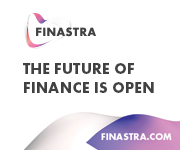|
This ABA Banking Journal newsletter is a free, twice-monthly supplement to the ABA Banking Journal magazine intended to help you stay on top of industry and policy news.
You can also stay abreast of banking news by visiting aba.com/BankingJournal, home to ABA Daily Newsbytes and other email bulletins.
The future of banking is algorithmic. Bringing together big data and predictive analytics is already enabling financial service providers to make better real-time decisions on loans and other products, with a more flexible, customer-centric user experience. But if banking can be algorithmic, what about financial regulation and supervision? (Tech Crunch)
|
Enterprise risk management has become a fundamental component of banks’ day-to-day routines and long term strategic planning processes. As ERM continues to grow in sophistication, organizations are embracing new technologies and improving their operations to better monitor and mitigate risk. (ABA Banking Journal)
|
Recently, three economists looked for ways to predict the likelihood of whether a borrower would pay back a loan. The scholars used data from Prosper, a peer-to-peer lending site. Potential borrowers write a brief description of why they need a loan and why they are likely to make good on it, and potential lenders decide whether to provide them the money. Overall, about 13 percent of borrowers defaulted on their loan. (New York Magazine)
|
While recognizing that traditional topics remain important in any discussion about capital, they only represent the walking that comes after crawling. It's best to twist the prism a bit to look at the uses of capital, rather than the types of capital, that support strategic initiatives. This is a call to community bankers, a shining of a light on the end of an era of big bank exclusivity, the leveling of the playing field and a fresh opportunity and runway to create shareholder and stakeholder value. (ABA Banking Journal)
|
In a keynote speech at the Consensus 2017 conference on bitcoin and blockchain, Abigail Johnson, chairman and CEO of FMR, the parent company of Boston-based Fidelity Investments, outlines her support for bitcoin and blockchain. Johnson says that she hopes bitcoin and blockchain thrive because she sees them both making it easier for more people to invest and to use financial services in a world where the Internet of Things and artificial intelligence are increasingly dominant. (Investor's Business Daily)
|
Loan growth slowed across all major lending categories in the first quarter, according to the FDIC’s Quarterly Banking Profile released today. Total loan and lease balances rose by $358.1 billion, or 4 percent, year-on-year. The first quarter also saw total loan balances decline by 0.1 percent, the first quarterly decline since 2013. (ABA Banking Journal)
|
ABA and Washington Federal have filed a motion for summary judgment in their class action lawsuit seeking over $1.1 billion in damages resulting from the United States’ improper reduction in dividends paid to Federal Reserve member banks. The cut to the long-established dividend contract was part of the 2015 highway spending bill, which reduced the annual dividend for Fed member banks with more than $10 billion in assets by two-thirds. (ABA Banking Journal)
|
Testifying before the Senate Banking Committee last week, Treasury Secretary Steven Mnuchin said he is hoping to collaborate with senators on financial regulatory relief and housing finance reform. "This committee has done extensive work on [housing finance reform] along with your work on community financial institution regulatory relief," he said. "I look forward to working with the Congress to develop a solution." (ABA Banking Journal)
|
In a comment letter this week, the American Bankers Association provided feedback on the Consumer Financial Protection Bureau’s proposed technical changes to the data lenders are required to collect and report under the final Home Mortgage Disclosure Act Rule (Regulation C). Most provisions of the rule take effect Jan. 1, 2018. (ABA Banking Journal)
|
Federal Reserve Board officials said at a meeting early this month that they wanted to see evidence of stronger economic growth before continuing to increase the Fed’s benchmark interest rate, according to minutes of the meeting published this week. (New York Times)
|
The Dodd-Frank Act spanned 2,300 pages and mandated 390 new rules. One might think that that left little room for unelected regulators to use their own discretion to revise policies. Quite the contrary. Despite burying regulators and banks in paperwork, the Democratic-enacted law actually left plenty of room for regulators — in many cases — to ignore some of that paperwork and interpret the statute as they see fit. (American Banker)
|
|








